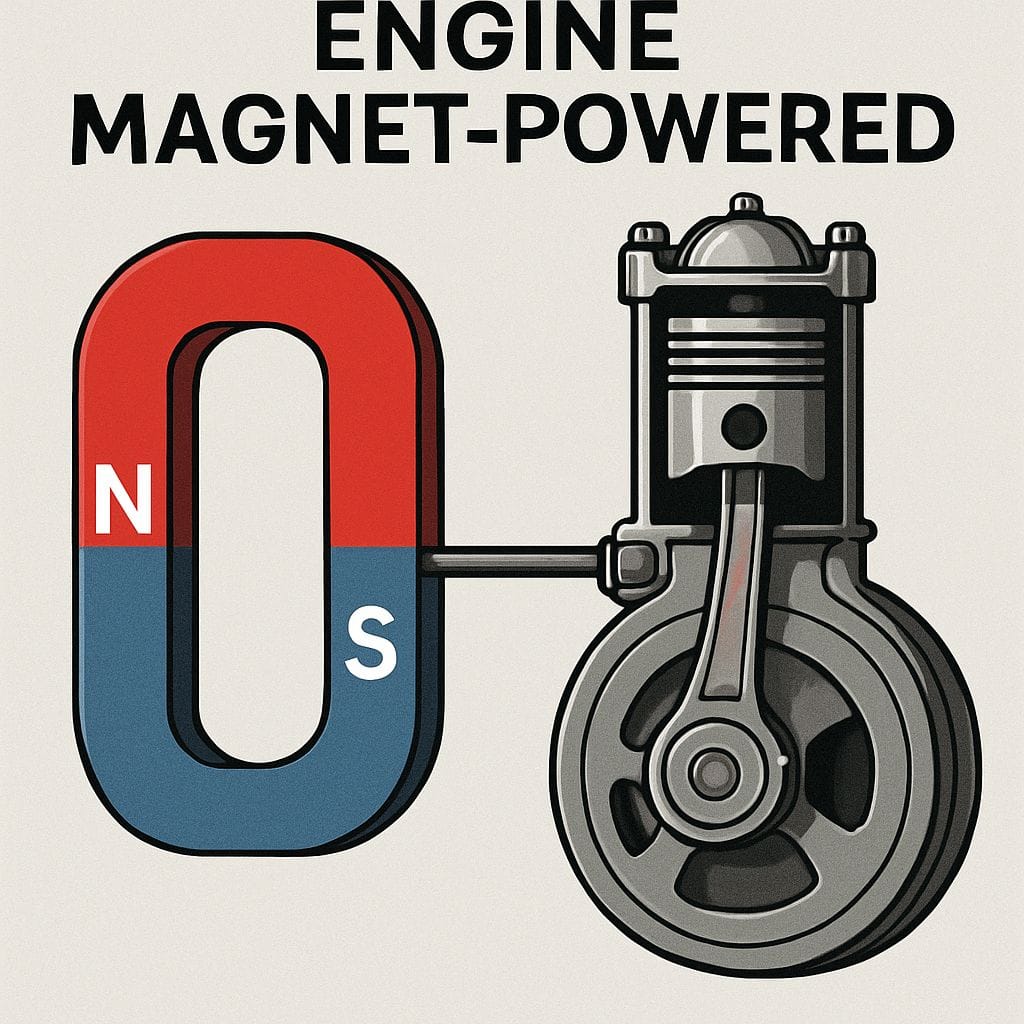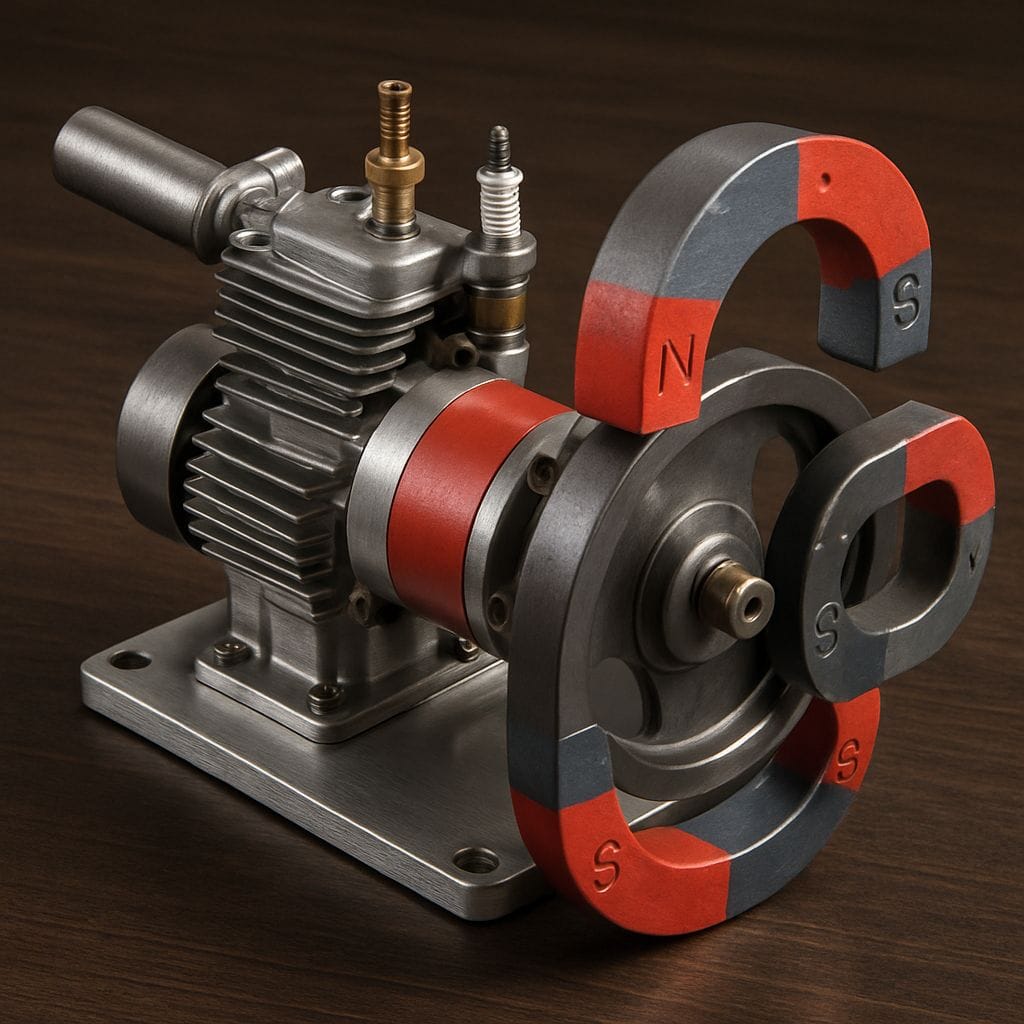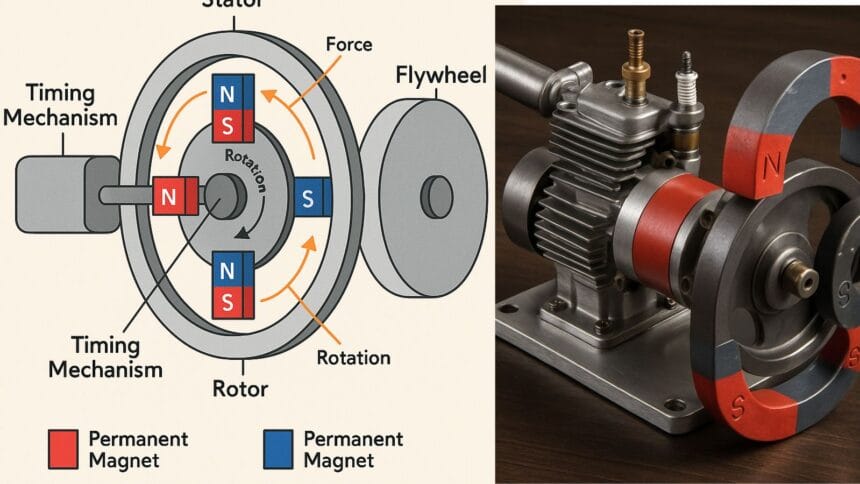Engine Magnet Powered
In the ongoing quest for cleaner, more sustainable energy, the term “engine magnet powered” is creating serious buzz. Once considered the realm of science fiction, magnetic engines are inching closer to real-world application. These engines promise motion without conventional fuel, relying instead on the repelling and attracting force of magnets.
In this article, we explore the reality behind magnet-powered engines, how they work, and whether they can truly revolutionize the automotive, industrial, and energy sectors. Let’s break down the facts and engage with what might be the most game-changing innovation in mechanical energy.

What Does “Engine Magnet Powered” Mean?
An engine magnet powered system refers to a mechanical engine that uses magnets—often arranged in specific configurations—to create continuous motion without fuel combustion. Unlike traditional engines, which rely on gasoline, diesel, or electric current, magnetic engines utilize the laws of magnetism to generate force and motion.
Typically, magnets are arranged in a rotor and stator setup, where the repelling and attracting forces of permanent magnets generate a rotational push. This mechanical movement can then be harnessed to power various machines—potentially including cars, generators, and even industrial tools.
How Does a Magnet-Powered Engine Work?
At its core, the principle is simple: Like poles repel, and opposite poles attract.
An engine magnet powered setup might consist of:
- Permanent Magnets: These provide continuous magnetic force.
- Rotors: Attached with magnets at calculated angles.
- Stators: Fixed structures that direct magnetic influence.
- Flywheels: To stabilize and continue motion.
- Timing Mechanism: Ensures the magnetic pulses are timed for propulsion.
When one magnet pushes another away, the rotor spins. Carefully arranged, this push-and-pull system can generate a cycle of motion, mimicking how combustion pushes pistons inside an engine.
Key Advantages of Engine Magnet Powered Systems
- No Fuel Required
Perhaps the most obvious benefit is the zero dependence on fuel. This makes magnetic engines environmentally friendly and cost-effective in the long run. - Low Operating Costs
With no need for gasoline, oil changes, or complex fuel systems, running costs drop significantly. Maintenance is also minimal compared to internal combustion engines. - Silent Operation
Magnetic engines produce little to no noise, making them ideal for residential and indoor applications. - Environmentally Friendly
Since no combustion occurs, there are zero emissions, contributing positively to the fight against climate change. - Scalable Design
Whether for a small motor or a large vehicle, magnetic engines can be scaled up or down depending on the use-case.
Real-World Applications: Are We There Yet?
Though the idea is powerful, engine magnet powered vehicles aren’t rolling off production lines just yet. But that doesn’t mean the concept isn’t being tested or refined.
- Prototypes of magnetic motors are being developed in research labs across the globe.
- Small generators using magnetic force are already used in some off-grid and DIY applications.
- Electric car enthusiasts have been experimenting with hybrid designs involving magnet-based propulsion systems.
Countries like Japan, Germany, and the Netherlands are funding R&D to explore this technology for renewable transportation and energy generation.
The Debate: Free Energy or a Myth?
Skeptics argue that a magnet-powered engine violates the laws of thermodynamics, especially the principle that energy cannot be created from nothing. However, proponents counter that they are not creating energy—merely harnessing an existing natural force.
While perpetual motion machines remain impossible under current scientific understanding, low-draw systems powered by magnets do seem viable, especially if used in tandem with kinetic energy recovery or solar charging.
Final Thoughts: The Road Ahead for Engine Magnet Powered Systems
The idea of using magnetism to power engines taps into the very core of what innovation means—rethinking the status quo. While it’s not yet mainstream, engine magnet powered technology is gathering support from engineers, green energy advocates, and futurists alike.
Whether it becomes a complete replacement for combustion or a hybrid supplement, magnetic propulsion is a field worth watching. As development continues and prototypes become more efficient, don’t be surprised if tomorrow’s cars run on pure magnetic force.

Read More: The Future of Smart Speed Bump
Read More: High-Performance Concrete Build Business Case Value
